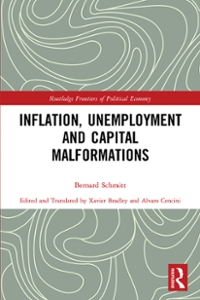Necessary information has been given for the following questions.
Consider the following Diamond economy (Le., the Overlapping Generations Model: OLG). In every period f with t = 0, 1,2, .., there always exist two types of individu- als, young and old who are continuously born or are continuously dying, respectively. L two-period-lived Individuals are born in period & and the population grows at a rate n (Lt = (1 + n)Lt-1). Each young individual supplies one unit of labor when he or she is young and divides the resulting labor income between first-period consumption and saving In the second period, the individual simply consumes the saving and any interest he or she earns. Let's assume that instantaneous (period) utility is given by the following constant-relative- risk-aversion (CRRA) utility function: 8 >0. (1) Show that the period utility function is increasing and concave in Ci. (2) Show that the coefficient of relative risk aversion (defined as - 90,162) is actually constant. Let Che and Car denote the consumption in period : of young and old individuals. Thus the (lifetime) utility of an individual born at t, denoted U, depends on Cu and Car+ and is given by U = [Cu) + 1+p where p is the rate of time preference. A production function Y, = F(K,, AL,) , where Ke represents capital, A, the technology or the effectiveness of labor, and &, labor itself, is assumed. Suppose that F( ) follows the usual properties, i.e., it has constant returns to scale and satisfies the Inada conditions. Also assumed is At grows at exogenous rate g (so At = (1 + g)A-1). Markets are competitive; thus labor and capital earn their marginal products, and firms earn zero profits. (3) Define be = 2,t, the amount of capital per unit of effective labor, a = 7,5, output per unit of effective labor, and me = f(k) the production function in intensive form. Assuming no depreciation, show that the real interest rate is given by n = f'(k) and the wage per unit of effective labor is given by un = /(1) - bef(kat).II. (50 points) Suppose that a firm has a Leontief production function given by y = min {Z/2, A/4), and that the rental rates for labor and capital are given by w=1 and v=4. Suppose also that K is fixed at 200 in the short run. (1) Write down the short-run cost minimization problem of the firm. (2) Find the conditional factor demand function for labor and calculate the firm's short-run cost function. (3) Calculate the firm's average fixed, average variable, average and marginal cost functions. (4) Draw the graph of all short-run cost curves. (5) Now suppose the firm can choose the level of capital stock K in the long run. Write down the firm's long-run cost minimization problem. (6) Find conditional factor demand functions for both inputs and calculate the firm's long-run cost function. (7) Calculate the firm's long-run average and marginal cost functions. (8) Draw the graph of all long-run cost curves. (9) Explain graphically the relationships between long run and short-run cost curves for the production function given above. (10) Explain the relationships between production functions and cost functions for this problem. III. (50 points) Answer all the questions in Part II again when the firm has a Leontief production function given by y = [min {L/2, K/4) 1 1/2 or y = [min {L/2, K/4}]2(For this question you have 20 attempts) Throughout this problem assume that for an industry aggregate demand is given by: Q (p) = 5250 - 250p Also, each firm in the industry has a production function of f(1,k)= vIk. Each firm has a short run capital stock of 100 units and r=7. Initially, w= 2. a. Find the firm's short run cost function (in the first box put the variable costs as a fraction and in the second box put fixed costs). C(q) = *q2+0 b. Find the firm's short run supply function 95 (p) = p c. Suppose there are 20 firms in the industry, find the aggregate supply function. Q'(p) = P d. Using the aggregate demand function above, what is the new equilibrium price? p = 0 e. What is the consumer surplus? cs = 0 f. Now, suppose that a minimum wage law goes into effect and the wage rate changes to w= 4. Find the firm's short run cost function. c(q) = 0*q2+0 g. Find the firm's short run supply function q'(p) = p h. Suppose there are 20 firms in the industry, find the aggregate supply function. Qs (p) = P i. Using the aggregate demand function above, what is the new equilibrium price? phew =0 j. What is the new consumer surplus? (Round to 3 decimal places) CS = k. How much did the equilibrium price increase due to the minimum wage law? Ap =0Homework 5-Word REFERENCES MAILINGS REVIEW VIEW AaBbCcDo AaBbCcDc AaBbCc AaBbect AaB Normal 1 No Spac.. Heading 1 Heading 2 Title Paragraph Styles 1) True or False? Explain your answer. "I paid $25 for the materials to make these flower arrangements, and sold them at the craft fair for $25, so I just broke even." 2) Explain the relationship between the shape of the marginal cost curve and the marginal product of labor curve. 3) Suppose a firm's average cost curve is described by the equation AC= 2q2-16g + 90. At what output level does the marginal cost curve cross the average cost curve? (Hint: take the derivative of AC with respect to q and set it equal to zero) 4) If input prices are w = 4, and r = 1, and g = 405105 a. What is the least-cost input combination required to produce 80 units of output? Show your work. b. Suppose instead that capital was fixed at 16 units. What would be the implications for labor usage and total cost? H e










